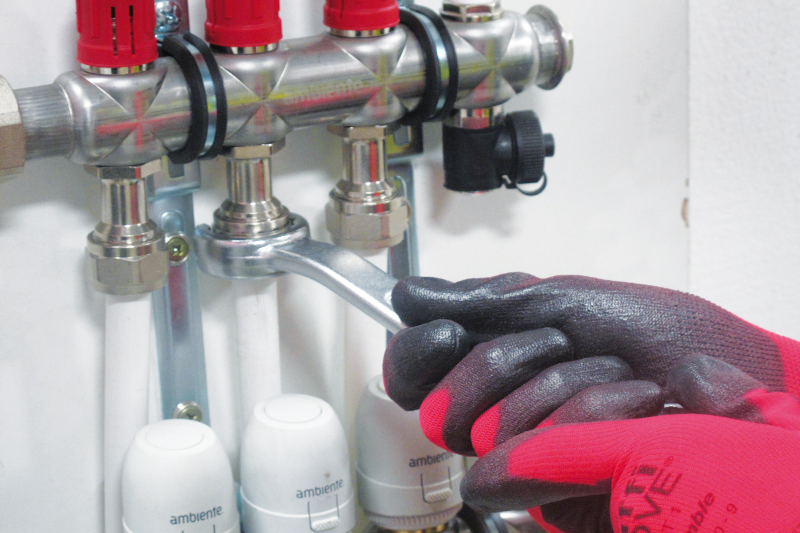
Carson Remmington of underfloor heating manufacturer Ambiente takes a look at low temperature heating systems and the options available to the retrofit market.
The domestic heating industry is about to change beyond all recognition. While day to day business at the moment is all about gas boiler servicing, repairs, upgrades and working with wall-mounted radiators, in 10 years’ time it’ll be a very different story. The changes are coming in sooner for the new build sector with the gas boiler ban effective from 2025, but expect the market for gas installations for the retrofit market to be tailing off not long after.
It will be replaced with low temperature heating systems. So, instead of having piping hot radiators adorning the walls of our properties, a likely alternative will be underfloor heating (UFH) systems which require a water temperature of only 40oC to comfortably heat a home. Of course the task of retrofitting UFH may seem daunting, but it’s very straightforward to do – once you know how.
If you’re new to UFH, you’ll soon discover it’s a vast subject. There are lots of solutions and options available, with factors such as insulation values, floor build ups, height and finishes, and of course budget to consider. For retrofit projects, you’ll be looking at low profile systems and there are four main types available:
- EPS (Expanded Polystyrene): This is an insulated, floating system which can be laid on to an existing level timber or concrete floor, and is recommended when you’re working with a restricted floor build up height. Our system uses an 18mm grooved insulation to take 12mm UFH pipework and covered in foil to help provide an even distribution of heat. An engineered timber floor can be laid directly on top, but for tiles or carpets, you’d need a further layer of structural support.
- SRB (Screed Replacement Board): This is a grooved cement board system and is great for hard floor finishes like timber or tiles. Our system is an 18mm cement board which is grooved to take 12mm UFH pipework and the benefit of this over the EPS option, is that the cementitious qualities of the board help to hold and distribute heat more effectively.
- Castellated system: This is a more flexible system which can be more suitable for uneven surfaces, but must be laid on to a solid sub-floor, without any loose material or insulation. In our system, a reinforced levelling compound is poured onto the castellated panels to ensure a smooth finish and any floor finish can then be laid on top.
- Finally, there’s a cement-coated XPS system: This is becoming increasingly popular because of its versatility. It’s a low profile system so it’s suitable for retrofit scenarios, but it’s also easy to cut, handle, incorporates an insulation layer and can be tiled directly on to.
Once you have information on your deciding factors (insulation requirements, floor build up restrictions etc), then your choice of which system to use will quickly narrow down. Of course you also need to establish what your low temperature heat source is. UFH systems are a perfect match for heat pumps – a renewable technology which works most efficiently when generating a flow temperature of 400C, and many in the industry have been installing this system combination for years.
Getting up to speed on all of this requires education and training, and even for those installers who’ve been working with UFH and low temperature systems for years, it might be worth checking in for a refresher course, just to make sure you’re fully up to speed on the new Regs. Major manufacturers across the country are working with industry bodies to roll out training courses to provide heating and plumbing engineers with the skills they need.
At Ambiente, we offer online video guides and manuals, as well as running our own Approved Installer Scheme. The Scheme is particularly suited to those who are new to the industry, but for those who are more experienced and just need technical support, we offer the option to visit site and provide specific guidance where it’s needed.
While we’re all focused to getting properly back on our feet, we hope 2021 will be a year of positive change. We look forward to seeing the industry grasp the new opportunities which are out there, taking up the offers for education and training and being part of a zero carbon future.












